
Collaboration between Neptune Mutual and SushiSwap
Explore Neptune Mutual's ongoing collaboration with SushiSwap offering several benefits.
Youtube Video
Playing the video that you've selected below in an iframe

In this blog, you will understand the usage of commonly used web3 based tools by the web3 users.
Web3 and blockchain-based tools are essential for developers, admins, and users to navigate and understand the basics of smart contracts. These tools help enable access to and use of the core features of blockchain technology with ease. They are also important for the growth and scalability of the decentralized economy by providing necessary utilities for the ecosystem, which is why we have created a dedicated Web3 tools page on our website.
To support the decentralized Ethereum community, we have decided to release the Web3 tools for free. Below, we outline each of these tools and their usage.
The String to Bytes32 converter is a handy tool for Solidity developers since it converts regular strings into the Bytes32 format required by the Solidity programming language. Furthermore, the tool also supports the reverse operation of converting Bytes32 values back into their string representation.
In the Solidity programming language, a String as a dynamically sized type has various constraints; however, since Bytes32 fits in a single word in an EVM execution context, it consumes less gas. The EVM has a word size of 32 bytes, so it is optimized for dealing with data in 32-byte chunks. When data isn't in 32-byte chunks, Solidity compilers have to do more work and output more bytecode, which results in greater gas costs.
The Bytes32 data type is used in Solidity to express fixed-length byte arrays of 32 bytes. This format is extensively used on the Ethereum blockchain to store strings, hashes, and other forms of data. The String to Bytes32 converter allows developers to convert ordinary strings into Bytes32 format, making sure of course that it works with the Solidity code they are building.
When you enter your input value of “text”, the converter will automatically convert it to its Bytes32 equivalent, also by adding the trailing zeros to fill up the storage space of 32 characters. 
The tool also has an options menu on the right, that allows the user to switch between several types of conversions, such as Strings and Numbers. When the Numbers option is enabled, the tool allows the user to convert a positive integer to its Bytes32 representation and vice versa.
This tool is highly beneficial for Ethereum blockchain developers working with smart contracts and dApp development, as it allows them to rapidly and efficiently transform data into the right format for use in their code. This saves a lot of time and effort while simplifying the use of Ethereum smart contracts.
The Solidity ABI Encoder tool enables developers to encode their smart contract function parameters in the format required for blockchain use.
Users need to enter or paste their smart contract or interface ABI code into the first field in order to utilize the tool. This ABI, or Application Binary Interface, defines the structure and functionality of a smart contract. It contains details about the functions and their parameters that are used in the contract.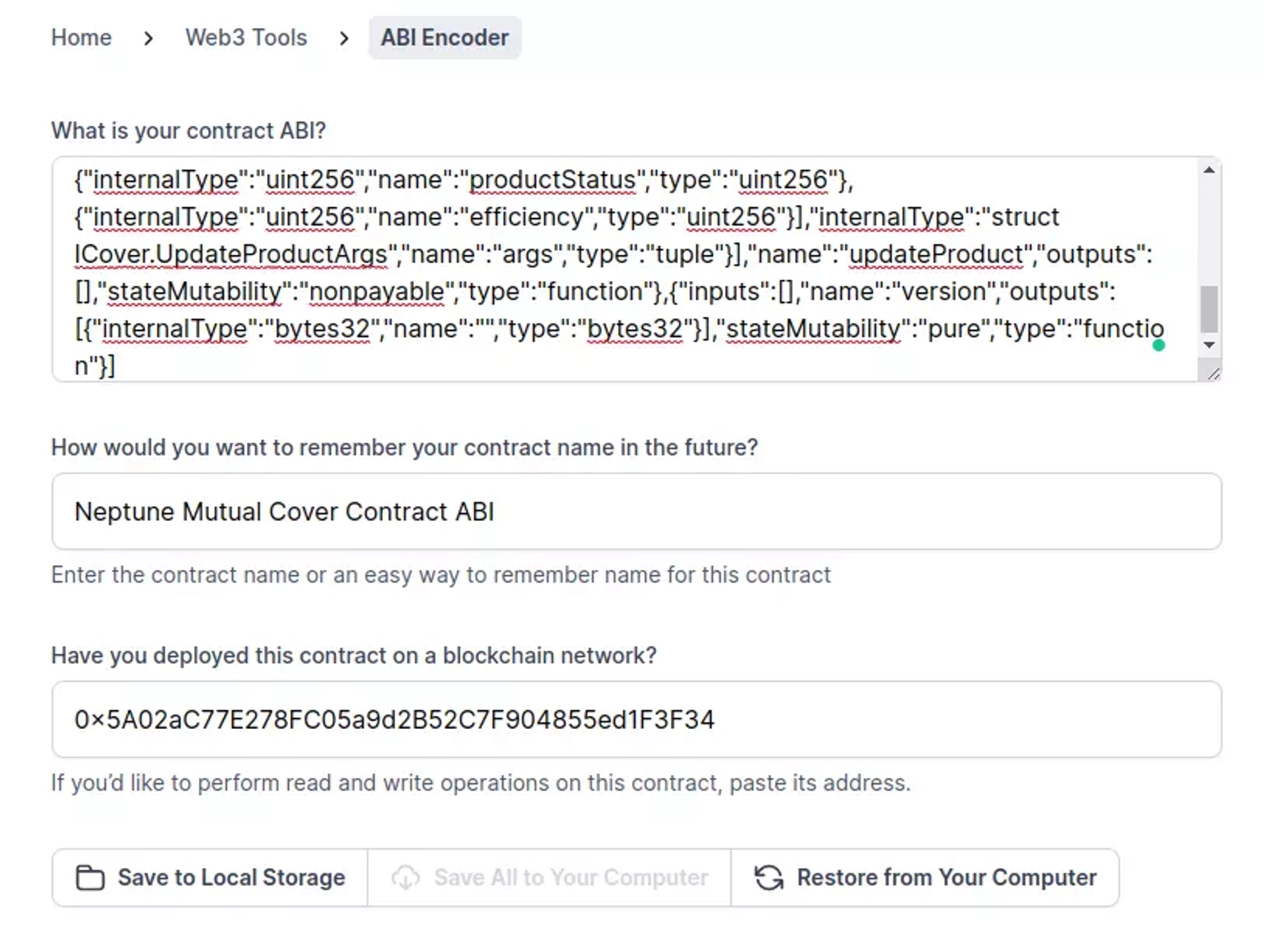
The ABI of a verified contract is found in the Contract ABI field in the lowermost section inside the Etherscan Contract page. You will have to copy and paste the ABI code in the first section.
If you don't want to specify the original contract name, you may enter a convenient name to remember this ABI in the future. Note that you can store the data entered in your browser's local storage engine for future use. We don't store your ABI or contract information on our servers, so saving the contract information will save yourself some time. You may also download a backup and restore it in case you want to switch to a different browser or machine.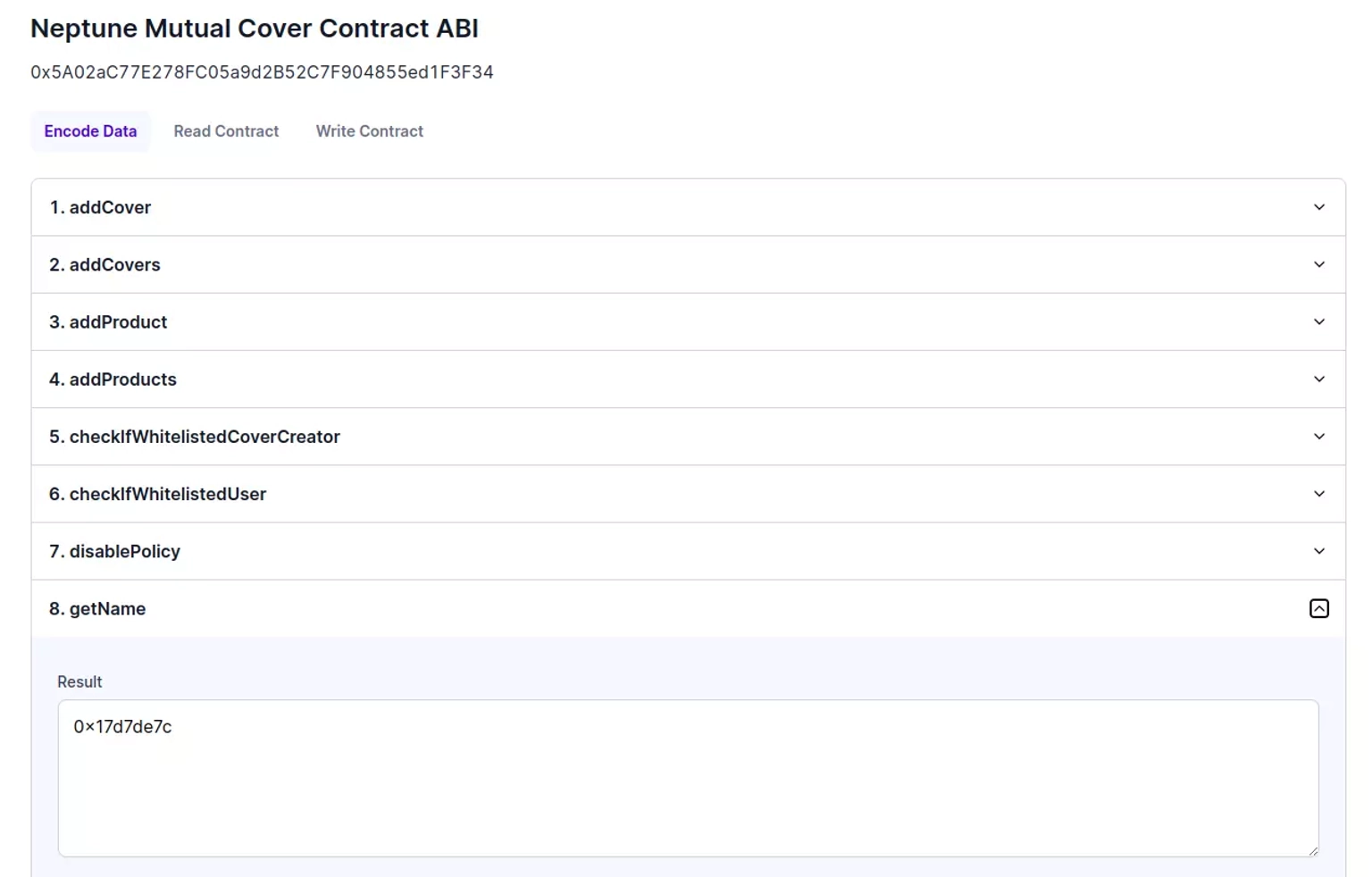
Furthermore, the tool simplifies reading and writing operations on the blockchain network. This is very useful when you, for some reason, have decided not to verify a smart contract on explorers like Etherscan. Since the tool works in your browser, you can paste your contract's ABI directly into the browser and quickly perform read and write operations without verifying the smart contract on Etherscan. Please note that this tool doesn't need a backend, and we do not store any ABI data, write logs, or track your usage directly except for the regular analytics tools we use. If you prefer, you can also configure your browser to disable tracking in order to stop standard web analytics tools from tracking your activity.
To read and write directly on the blockchain, you also need to enter the contract's deployed address on the blockchain network. You may also use the tool to encode any function calls and submit the results to the blockchain for execution.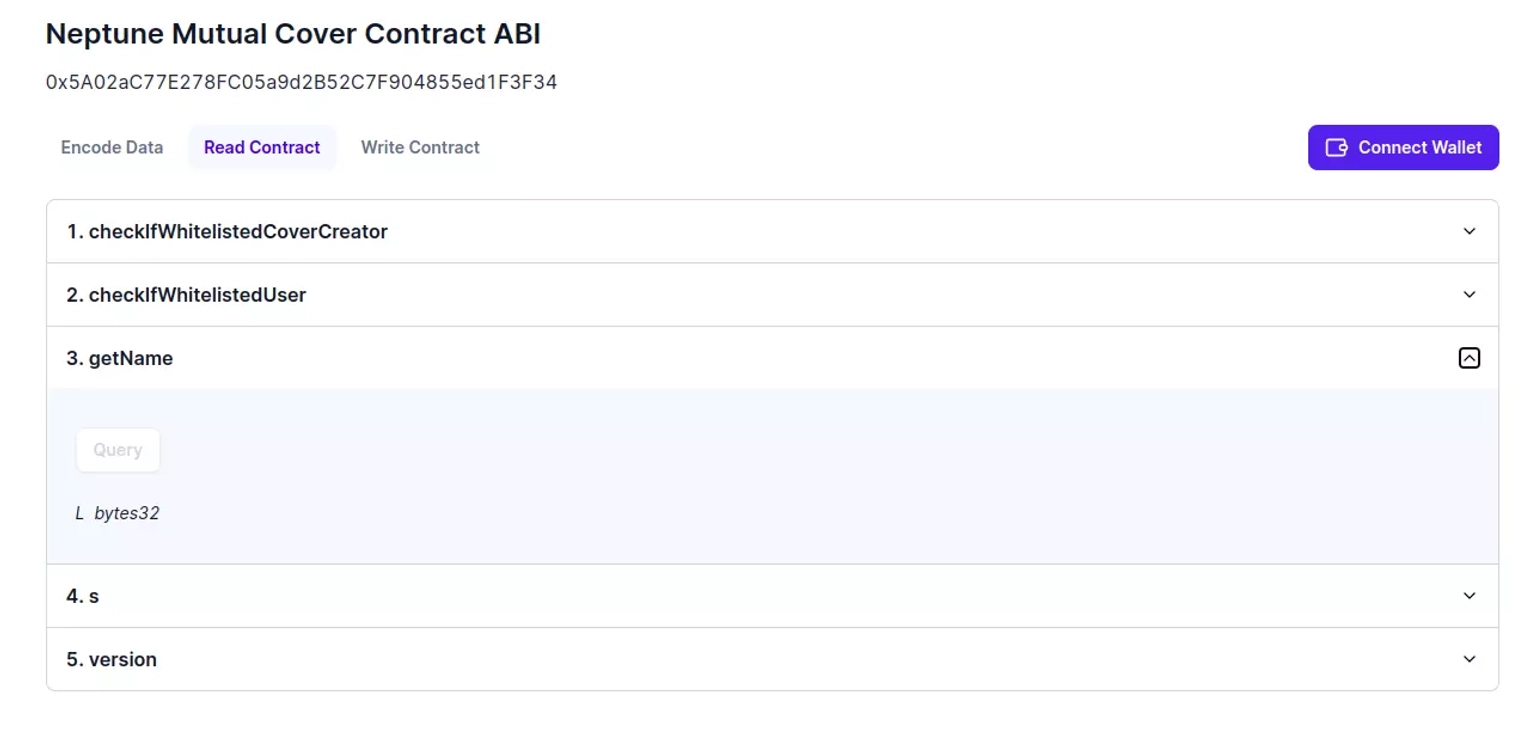
The Ethereum Unit Converter enables users to easily convert between different denominations of Ethereum. The Simple Converter version of the tool includes three form fields for Wei, Gwei, and ETH.
Wei is the smallest denomination of ether, the unit used to perform transactional operations on the Ethereum blockchain network, where 10^18 or 1,000,000,000,000,000,000 wei is equivalent to one ether. Wei is named after Wei Dai, a computer science graduate of the University of Washington. It is frequently referred to in a metaphorical sense as the gas that powers the Ethereum network.
Gwei is another unit of ether, which is made up of the words wei and giga, which is a prefix for billion. One gwei is equal to one billion wei, and one ether is equal to 10^9, or one billion billion gwei. Gwei is required to cover the cost of computing power or the transaction fees.
In the Simple Converter, when you enter a value into any of the three form fields, the tool will automatically compute and show the equal value in the remaining two units. This lets you quickly and easily convert between the various units and better understand the amount of gas required for an Ethereum transaction.
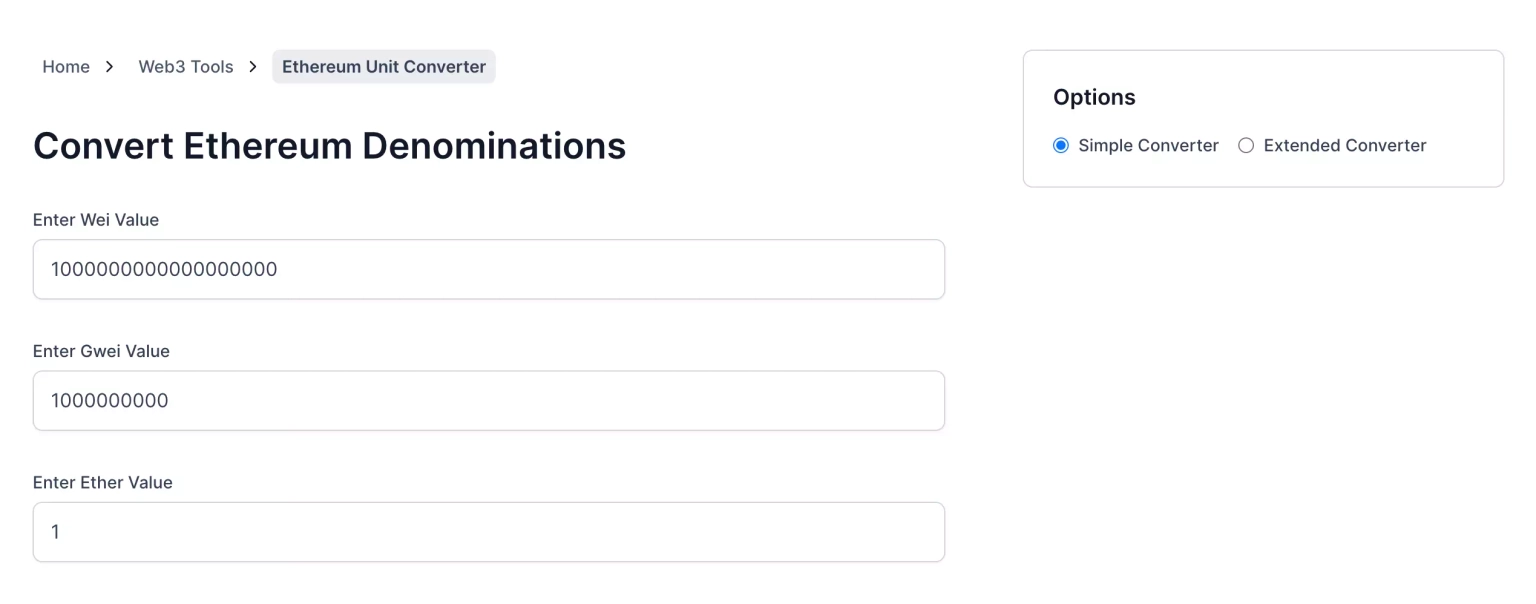
However, in the Extended Converter, when you enter a value into any of the available form fields, the tool will automatically compute and show the equal value in many higher and lower units of ether.
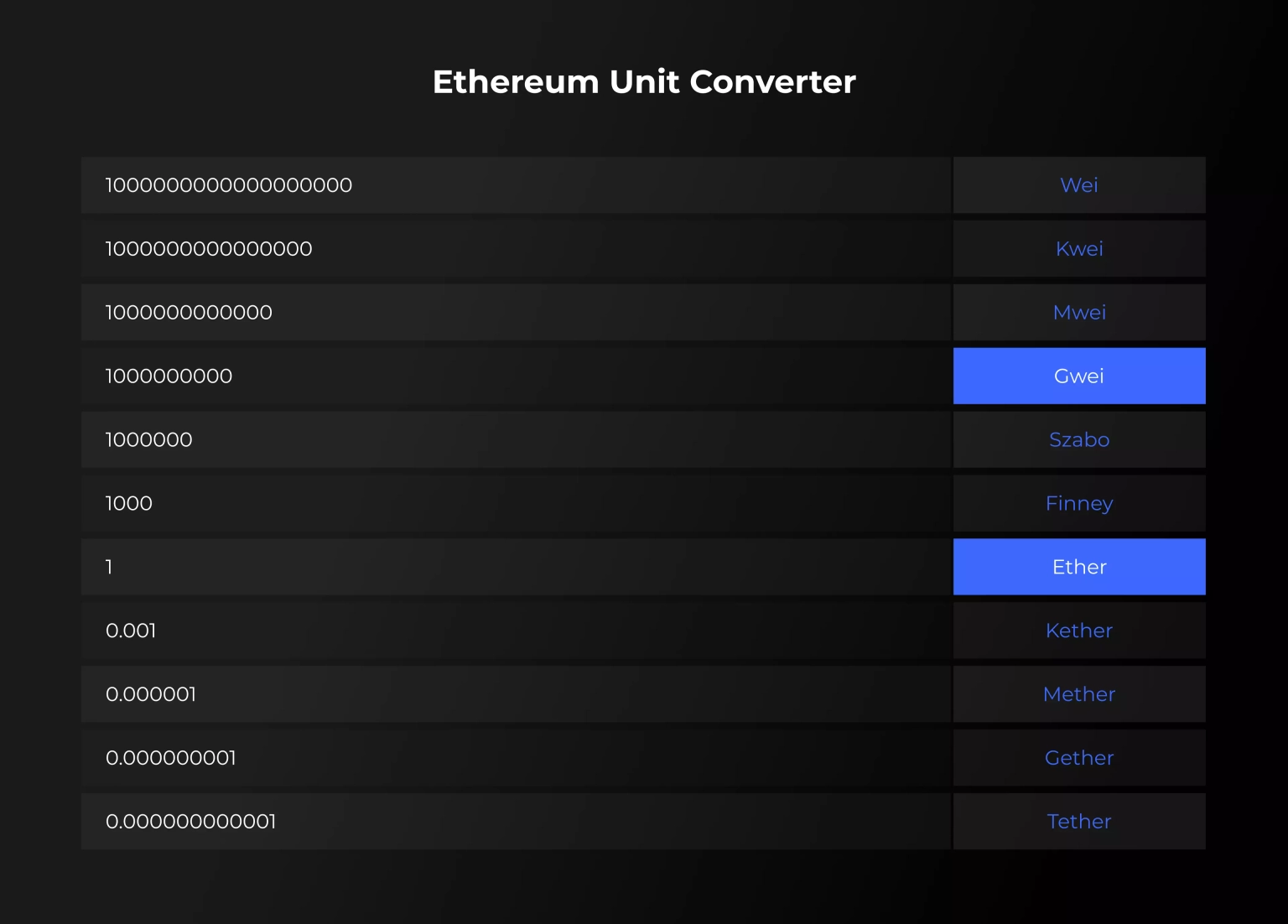
Neptune Mutual’s mission is to cover, protect, and secure on-chain digital assets, and providing free to use Web 3 developer tools is one additional small contribution to make blockchain projects a safer space for the whole community. For more information about security in the blockchain space, please sign up to our newsletter here.